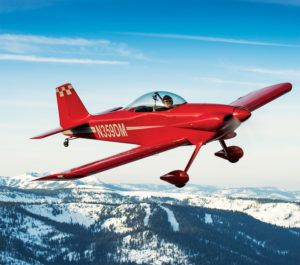
For the last 20 plus years any person who’s thought of building their own airplane has had to get past one big question: “Why should I build anything other than an RV?”
Well, really, why should you build anything other than an RV? It’s where all the lines cross on the chart. They’re affordable. They’re available. They’re prepunched and match drilled. They’re apparently fast enough and carry enough. Lord knows they’re well supported. They fly nicely and fit into a normal or even a compact hangar. They don’t look funny or smell bad when you build them, although you could say driving all those rivets makes them sort of noisy to the neighbors across the hall.
Furthermore, when you have an RV, when you show up you won’t be that guy—the one with the bugs in his teeth or still wearing a helmet and scarf. You don’t have to buy a leather jacket. There’s even a range of RVs depending on whether your spouse insists on holding hands or you yearn to sit one-front-the-’tother as God intended sleek little aerodynamic things to be.
But…aren’t RVs sort of flying Camrys, stain-free and no iron? Polyester nirvana for the wash-and-fly crowd? Everybody has one or is building one. They’re sort of squared off, and when built the way papa VanGrunsven says, they’re as expressionless as a Grumman aluminum canoe. To fly in the RV formation is to sort of flaunt mass perfection, to sit on the same wire with all the other birds when parking in the RV corral at the big airshows.
Maybe RVs are all those things, but one thing is for sure: They’ve been carrying experimental aviation for decades now, and to a surprising extent, a significant part of general aviation overall. RVs are the volume lifeblood of our hobby, one reason engine shops can stay in business, and probably the enabler for much of the electronic gizmos so many of us seem to enjoy. There’s a little village of cottage industries catering to RVs and that’s a great thing.
But there are prices to pay when one nearly perfect solution dominates. For starters, the RV phenomena has helped drive small aircraft engine choices into a corner. If it isn’t a 4-cylinder parallel-valve Lycoming or reasonable facsimile thereof, then it’s sort of oddball in the experimental world nowadays. Of all the things general aviation could have used starting many years ago, it was some movement forward in engine modernization (Continental certainly made a fine upgrade with the Voyager engines, but no one bit due to price). Now, RVs are hardly to blame for what is really our current dependency on just one type of engine, but they definitely have not helped us move forward in this regard. That’s because as the VanGrunsven company has gone from success to success, they’ve by necessity become more limited by continuously reinforcing their own market’s choices and by extension, we’ll bet, their insurance underwriters’. The good ’ol Lyc is a known quantity, and a pretty good one at that. So not only is there little incentive to change to newer technologies, but if we could dig deep enough, I’ll bet we’d find agents in the RV world actively holding back from anything too different with the hardware. If it isn’t broke, don’t fix it and all that, so don’t look for a Continental engine mount from Van’s anytime soon, much less an EcoBoost Ford or some such.
What do you bet the thinking is the same in airframes? How much sense does a composite RV make (an RV seaplane, for example)? None at all for the kit maker, who has done the world a huge favor by making substantial investments in aluminum kit-making machinery and thereby delivered very affordable, nicely engineered aluminum airframes to all of us. Heck, they even have zippy-doo-dah quickbuild kits to keep up with customers who have more money than time in our ever-faster moving world. They’ve done such a good job of mass-kitting aluminum airframes, they’ve riveted themselves pretty tightly into an aluminum corner.
So it’s up to someone else to pioneer composite airframes for the masses, but in 2020 not only would such an entity have to weather all the tribulations of developing a great design plus setting up such a company, but it also must buck the headwinds of VanGrunsven capturing so much of the market before anyone else even gets started.
But is it Van’s superiority and market success holding a lid on experimental innovation or is it us, the customers? If Van’s success is partially from their superior aircraft design and business acumen, the great majority of Van’s success comes because Van’s makes what we want. Or, to put it another way, how many of us want to go more than 200 mph? We all say we do, but when it comes time to pay for the fuel, or buy two extra cylinders at rebuild time, or pony up for a constant-speed prop, or fit an oxygen system or a full IFR panel, then obviously a bunch of us say 175 mph is pretty good.
How many of us can’t wait to whip the stick all the way forward under the instrument panel and push through -4 Gs? How many of us are truly willing to write a $150,000 check for a factory-new, water-cooled Jet-A engine that gets 40 mpg at 200 mph? How many of us truly want a four-seater with transcontinental legs? Or a daily driver that climbs at 3000 fpm? How many of us find the looks of modern kit aircraft a little too cookie cutter and pine for an inverted in-line option just to have a narrow cowl? How many want to wear rubber gloves and stir resin? Or sand until a week past doomsday?
In the end, how many of us are willing to step outside the Van’s box? A few, for sure. I still like biplanes, as do a bunch of other people who own leather jackets. Others dig bouncing off rocks and sandbars, and some are into splashing water off the bottom of their airplanes. But what do you bet about half of these people also have an RV, or wish they had one, or at least enjoy occasional access to one?
So, thank goodness we have the safe and sane choice from Oregon. It may not be pushing innovation in aviation very hard, so we’re going to have to do as much of that as possible on our own.




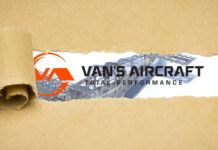





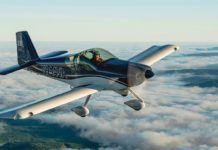

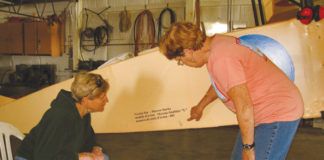
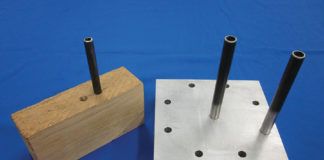
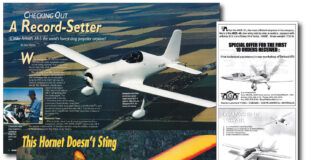
Gotta agree about that ecoboost conversion- the 2.3 with sodium exhaust valves. Would look kinda pt-6 ish, like a PC-9, in a rv 8. Wouldn’t have to live with insane rpm, either